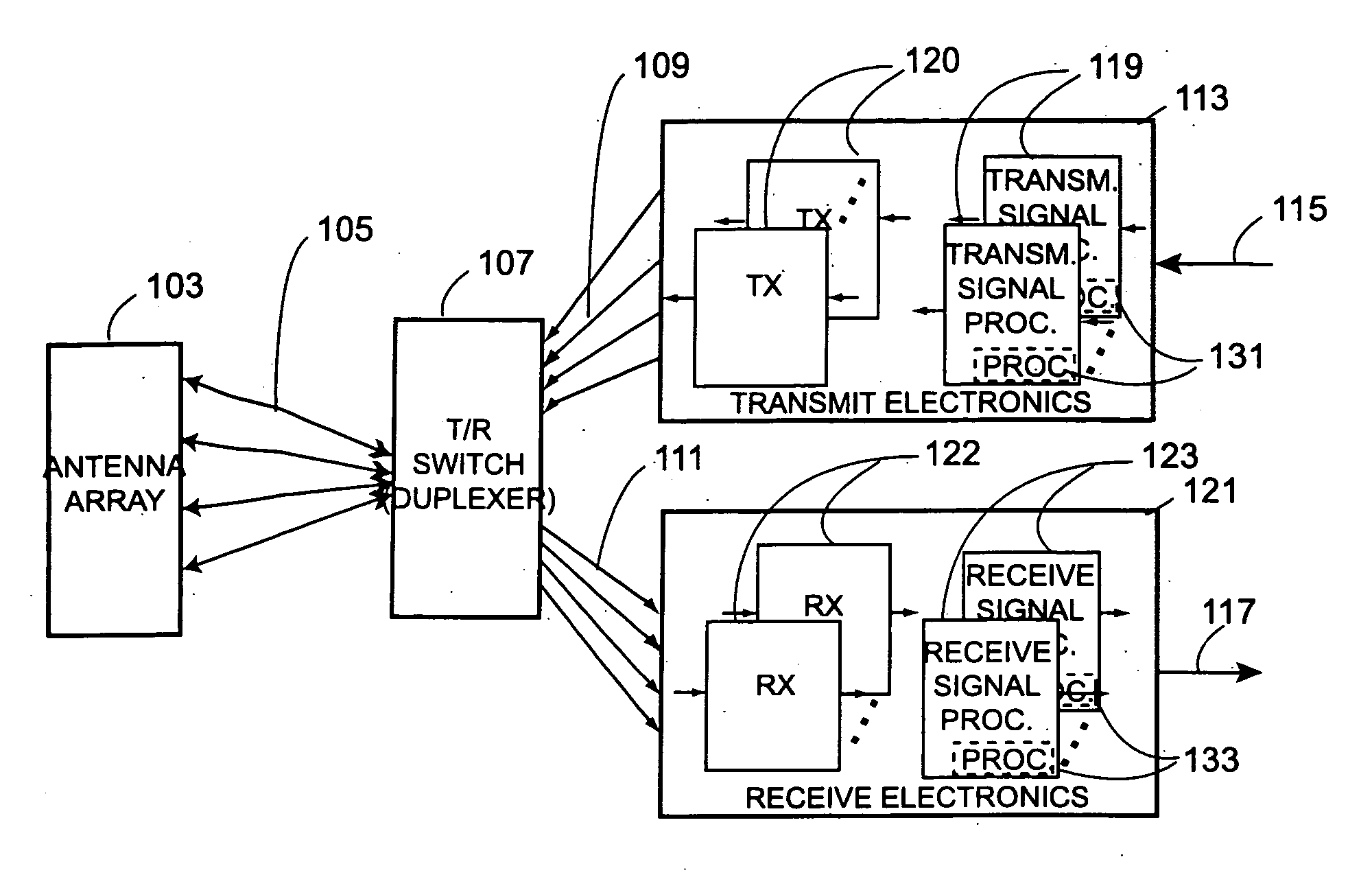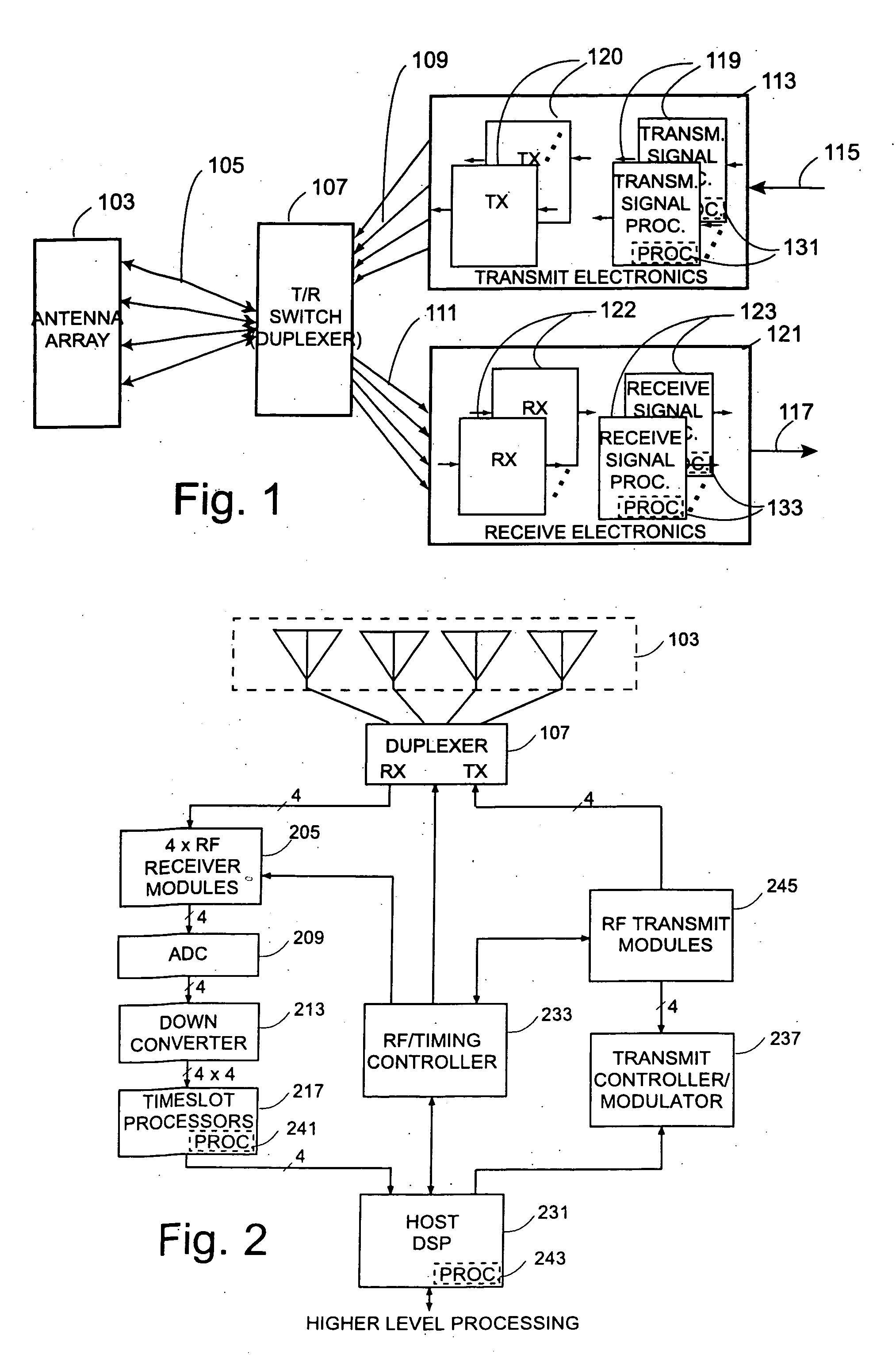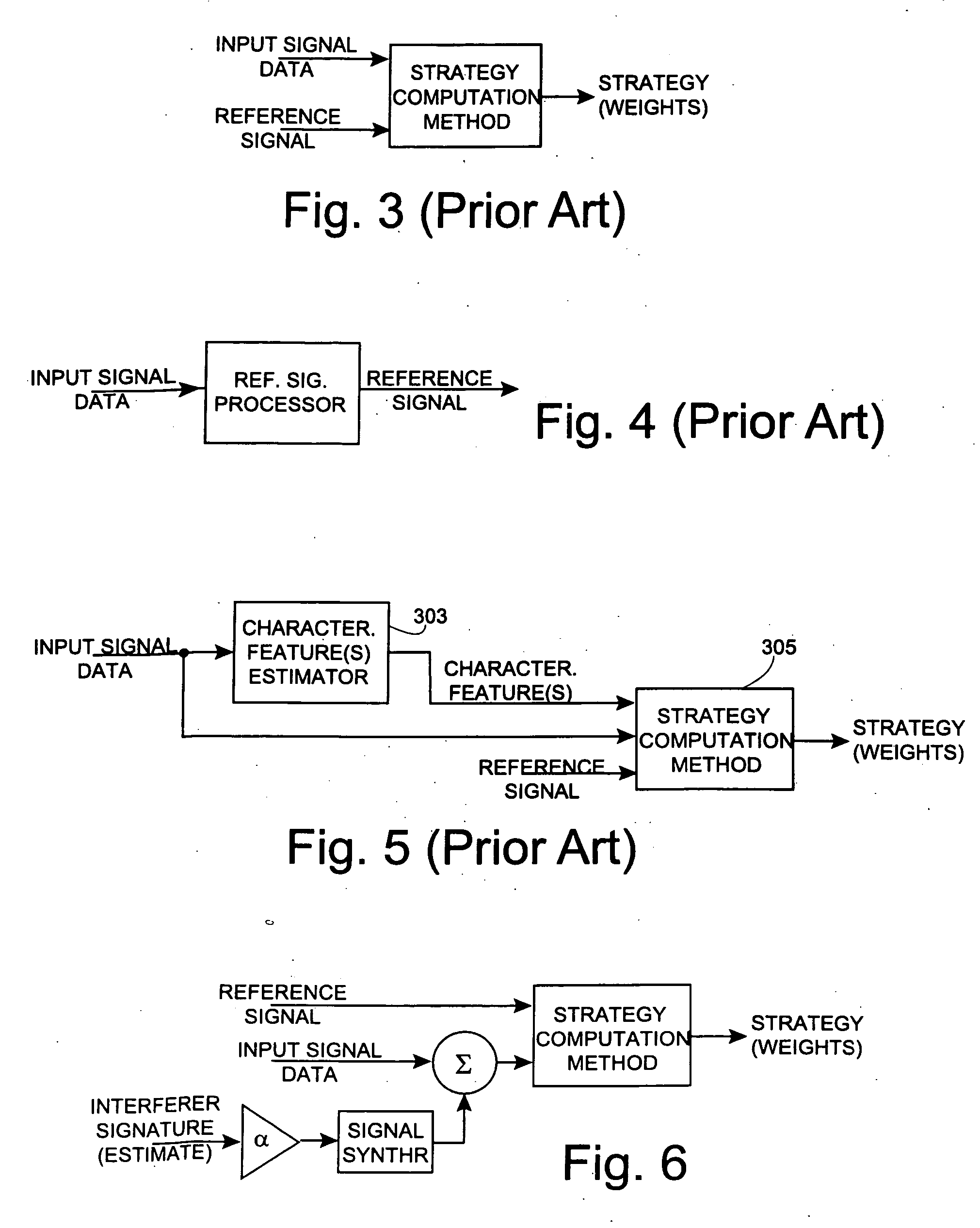Null deepening for an adaptive antenna based communication station
a communication station and antenna technology, applied in the field of wireless communication systems, can solve the problems of inability to flexibly perform this tradeoff, disturb su2, need for the base station, etc., and achieve the effects of improving uplink or downlink processing strategies, reducing transmission power, and reducing signal sensitivity
- Summary
- Abstract
- Description
- Claims
- Application Information
AI Technical Summary
Benefits of technology
Problems solved by technology
Method used
Image
Examples
first embodiment
[0084] the invention applicable to one null-deepening based on the known or estimated signature of one interferer denoted SUj with signature (estimate) aj is shown in FIG. 6. A signal formed from the estimated or known interferer signal is scaled and added to the received signal data Z before determining the strategy, that is, modified received signals described by
{circumflex over (Z)}=Z+αjâjssynth,
with αj a tunable scale factor for any interferer j. ssynth is any signal that has the same temporal structure as a typical communication waveform used in the system, or preferably, a temporal structure that would be identified by the particular strategy computation method as not that of the user. For example, for a constant modulus property restoral method, using a non-constant modulus structure for ssynth ensures that the strategy computation method recognizes this as an interferer. In the preferred embodiment, however, ssynth comprises N random noise samples. In another embodiment, t...
third embodiment
[0096] A third embodiment is applicable to strategy determining methods that use an estimate of the spatial or spatio-temporal covariance (including the interference-plus-noise covariance) determined from the input signal (and possible a reference signal) to determine the strategy. The methods of Eqs. (7A) and (7B) so use the covariance to determine a weight vector. One embodiment of the invention adds some information from the interferer signatures to data used by the covariance estimator of the known weight determining method. For example, if the known weight computation method of Eq. (7B) is used, according to this embodiment of the invention, the weights to use are determined as: w^=(ZZH+γ I+∑j≠iαjajajH)-1Z siH,(10)
where Z is the received data, and αj again a tunable scale factor for any interferer j, set as described above for the signal injection method.
[0097] Many modifications are possible within the scope of the invention. In general, any uplink (i.e., receive) p...
PUM
 Login to View More
Login to View More Abstract
Description
Claims
Application Information
 Login to View More
Login to View More - R&D
- Intellectual Property
- Life Sciences
- Materials
- Tech Scout
- Unparalleled Data Quality
- Higher Quality Content
- 60% Fewer Hallucinations
Browse by: Latest US Patents, China's latest patents, Technical Efficacy Thesaurus, Application Domain, Technology Topic, Popular Technical Reports.
© 2025 PatSnap. All rights reserved.Legal|Privacy policy|Modern Slavery Act Transparency Statement|Sitemap|About US| Contact US: help@patsnap.com



